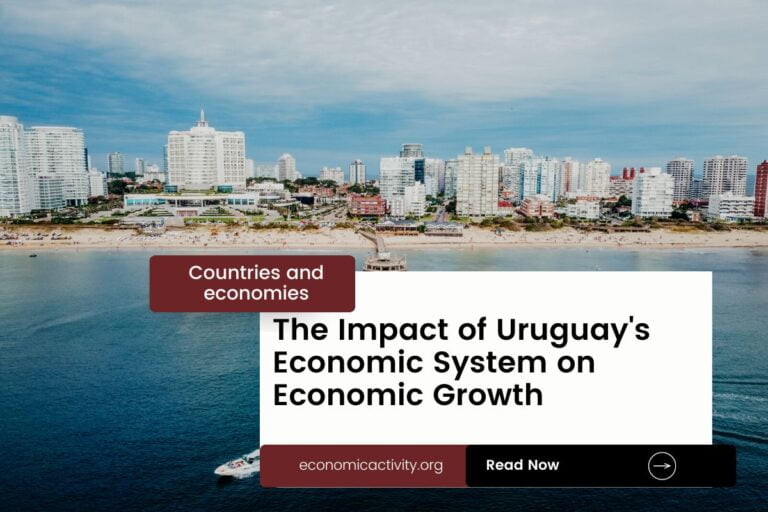Suriname, with a population of 618,040, is ranked 159th in the world, just behind Luxembourg. Located in South America, Suriname covers a total area of 163,820 square kilometers, ranking 87th globally, just below Uruguay.
Suriname’s economic position in 2022 shows a GDP of $3.62 billion, ranking 159th globally, trailing behind Liberia with a GDP of $4 billion. The GDP per capita in Suriname is $5,858.82, placing it at the 105th position worldwide, behind Iraq with a GDP per capita of $5,937.20.
Suriname’s economy is characterized by its reliance on natural resources such as oil, gold, and agriculture. The country faces challenges in diversifying its economy and reducing its dependency on commodity exports to ensure sustained economic growth and stability.
What are the economic activities of Suriname?
- Primary activities: 11.6% of GDP.
- Secondary activities: 31.1% of GDP.
- Tertiary activities: 57.4% of GDP.

Primary Sector of Suriname
Suriname’s primary sector, with 0.5% of land dedicated to agriculture, thrives due to its tropical climate and rich natural resources. The main agricultural products include rice, sugarcane, oranges, chicken, plantains, vegetables, bananas, coconuts, cassava, and eggs.
Despite contributing 11.6% to the GDP, agriculture plays a crucial role in the economy. The diverse range of crops and animal products highlights the sector’s significance, providing sustenance and livelihoods for many in Suriname.
Suriname’s diverse geology results in abundant natural resources. Timber, hydropower, fish, kaolin, shrimp, bauxite, gold, and minerals like nickel, copper, platinum, and iron ore drive its primary sector, boosting the economy through exports and employment opportunities.
Suriname’s oil production of approximately 14,833 barrels per day ranks it 53rd globally. With 99,980,000 barrels in reserves, it holds 0% of the world’s total.
Secondary Sector of Suriname
What is the secondary sector or what are secondary activities?
The secondary sector encompasses industries that transform raw materials into finished products for consumption. In Suriname, the main industrial products include gold, oil, lumber, and food processing. These products are vital for the country’s economy and contribute significantly to its growth and development.
In 2023, Suriname’s manufactures accounted for only 7.42% of its total exports, indicating their limited significance in driving the country’s economy.
Tertiary sector of Suriname
What is the tertiary sector or what are tertiary activities?
The tertiary sector, also known as the service sector, comprises the ‘soft’ parts of the economy where people offer knowledge and time to improve productivity, performance, and meet needs. It involves intangible goods like attention, advice, and expertise, including both consumer and business-to-business services. In Suriname, the main tertiary activities include healthcare and medical care, education and training, banking and finance, communication and information exchange, transportation and logistics, and security and protection.
Among these, Suriname’s economy heavily relies on tourism, contributing significantly to its GDP. With over 300,000 annual arrivals, the sector plays a vital role. Popular destinations like the Central Suriname Nature Reserve and Brownsberg Nature Park attract nature enthusiasts, showcasing the country’s rich biodiversity and eco-tourism potential.
Another example of tertiary economic activity is the mobile cellular sector, with approximately 929,000 subscriptions, equating to about 150 per 100 inhabitants. This connectivity fosters technological growth, enabling innovation and digital services.
International Trade of Suriname
Import Activities of Suriname

Suriname’s high import activities, accounting for 46.87% of GDP, play a crucial role in meeting domestic demand and driving economic growth.
Suriname’s key import activities include refined petroleum, excavation machinery, cars, plastic products, and tobacco. Its top import partners are the US (25%), China (15%), Netherlands (13%), Trinidad and Tobago (6%), and Japan (3%).
Exports Activities of Suriname

Suriname’s export activities are of high importance, accounting for 63.82% of GDP in 2023, totaling $2.31 billion. This signifies a strong reliance on exports for economic growth and stability.
Suriname’s export activities are diverse, with gold, petroleum, machinery, wood, and fish being key commodities. Its top export partners are Switzerland, UAE, Belgium, Guyana, and Trinidad and Tobago, with Switzerland accounting for the largest share at 39%.
Suriname economy challenges in 2024
In 2024, Suriname faces economic challenges despite being an upper middle-income country. The new floating currency regime aims to stabilize the economy, but the controversial hardwood industry and reliance on aluminum, gold, and hydrocarbon exports pose risks. The IMF plan for recovery and fiscal sustainability is crucial for overcoming these obstacles.




Leave a Reply